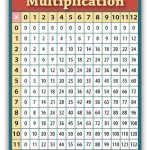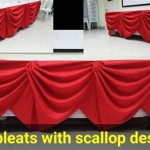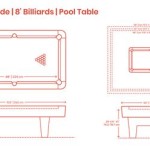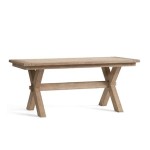What Makes A Good Pool Table Felt
Pool table felt, technically known as cloth, is a critical component affecting the playing experience. Its quality significantly impacts ball speed, accuracy, and overall table longevity. Choosing the right felt requires understanding its composition, manufacturing process, and inherent characteristics. A superior felt enhances gameplay, while a subpar one leads to frustration and potential damage to the table itself.
The durability and playability of pool table felt are paramount. Factors such as wool content, weave density, and nap direction contribute directly to its performance. Selecting the appropriate felt involves considering the table's intended use, the skill level of the players, and budget constraints. Investing in quality felt translates to a smoother, more consistent, and more enjoyable game of pool.
Understanding the Composition and Weave
The composition of pool table felt primarily revolves around the blend of wool and nylon. The ratio between these two materials dictates the felt's speed, durability, and resistance to wear and tear. Higher wool content traditionally signifies a faster cloth, allowing for quicker ball speeds and a more responsive play. However, 100% wool cloth is prone to quicker degradation, especially under heavy use. It's important to note that older billiard cloth was typically more wool-dominant, while modern cloths often have a significant nylon component.
Nylon is added to enhance the felt's resilience and longevity. It acts as a binding agent, reinforcing the wool fibers and preventing excessive stretching, tearing, or pilling. A higher nylon content typically results in a slower cloth, but it significantly extends the felt's lifespan. A balanced wool-nylon blend offers a compromise between speed and durability, making it a popular choice for both amateur and professional players.
The weave also plays a vital role. A tighter, denser weave creates a smoother playing surface, minimizing friction and promoting consistent ball roll. A looser weave, on the other hand, can lead to premature wear, increased ball deflection, and a less predictable playing experience. The direction of the weave, often referred to as the "nap," also impacts ball behavior. Balls tend to travel faster and truer when moving in the same direction as the nap.
The manufacturing process significantly influences the felt's quality. High-quality felt undergoes rigorous testing and quality control measures to ensure consistent thickness, uniform weave density, and proper nap alignment. Inferior manufacturing processes can result in inconsistencies in the felt, leading to uneven ball roll and unpredictable gameplay. It's important to select felt from reputable manufacturers known for their commitment to quality and precision.
Considering the Nap and Its Impact on Play
The nap refers to the directional texture of the felt's surface. It's created during the manufacturing process when the fibers are brushed or aligned in a specific direction. The nap significantly influences ball speed, deflection, and overall consistency. Understanding the nap is crucial for experienced players who rely on subtle adjustments to their shots.
Felt can be categorized into two main types based on nap: napped cloth and worsted cloth. Napped cloth, also known as woolen cloth, has a distinct directional texture. Balls tend to move faster and straighter when traveling in the same direction as the nap, and slower and with more deflection when moving against it. This nap creates a slight "grain" on the cloth, adding a layer of complexity to the game.
Worsted cloth, on the other hand, lacks a prominent nap. The fibers are tightly woven and sheared to create a smooth, uniform surface. This type of cloth provides consistent ball speed and minimal deflection regardless of the ball's direction. Worsted cloth is often preferred by professional players due to its predictability and precision. It allows for more accurate shots and tighter control over the ball.
Maintaining the nap is important, especially in napped cloths. Regular brushing in the direction of the nap helps to remove chalk dust and debris, preventing the fibers from becoming matted or distorted. This ensures a consistent playing surface and prolongs the felt's lifespan. Ignoring the nap can lead to uneven ball roll, increased deflection, and a less enjoyable playing experience.
Evaluating Durability and Resistance to Wear
Durability is a key factor in determining the overall value of pool table felt. Felt is subjected to constant friction from the balls, cues, and even chalk dust. A durable felt resists tearing, stretching, and pilling, maintaining its smooth surface and consistent playing characteristics over time.
The wool-nylon blend, as discussed earlier, directly impacts durability. Higher nylon content increases the felt's resistance to wear and tear. Additionally, the quality of the wool fibers plays a crucial role. High-quality wool fibers are stronger and more resilient than inferior ones, contributing to a longer lifespan for the felt.
The weave density also contributes to durability. A tighter weave provides more resistance to tearing and stretching. A looser weave is more susceptible to damage and may require more frequent replacement. The manufacturing process again plays a crucial role in determining the fabric's overall tensile strength and resistance to abrasion.
Another factor affecting durability is the thickness of the felt. Thicker felt generally provides more cushioning and is better able to withstand the constant impact of the balls. However, excessively thick felt can also slow down the ball speed. A balanced thickness is ideal, providing both durability and optimal playing characteristics.
Proper maintenance significantly extends the lifespan of pool table felt. Regular brushing removes chalk dust and debris, preventing them from embedding in the fibers and causing abrasion. Spills should be cleaned up immediately to prevent staining and damage. Avoiding excessive force during gameplay, such as jumping the cue ball excessively, also helps to prevent premature wear and tear. Covering the table when not in use protects the felt from dust, sunlight, and other environmental factors that can contribute to its degradation.
Finally, the environment also affects felt’s durability. Higher humidity can loosen the fibers over time. Sunlight exposure can cause the cloth to become discolored and brittle. These environmental factors should be considered when selecting the best cloth for a specific location.
By considering these factors, one can make an informed decision about what constitutes good pool table felt, ensuring both optimal playing conditions and long-term value. Understanding the nuances of composition, weave, nap, and durability allows for the selection of felt that best suits individual needs and playing preferences.

How To Choose The Right Pool Table Felt Hamilton Billiards Snooker Blog

Guide To Choose The Best Pool Table Felt

Choosing A Pool Table Cloth Worsted Vs Napped Which Is Better

Choosing A Pool Table Felt For Your West Penn Billiards

How To Choose The Right Pool Table Felt Hamilton Billiards Snooker Blog

Custom Pool Table Felt

Spotting Quality Pool Tables What To Test For

What Is The Right Pool Table Cloth Type For Me

Pool Cloth Buyer S Guide Liberty

Custom Pool Table Felt








